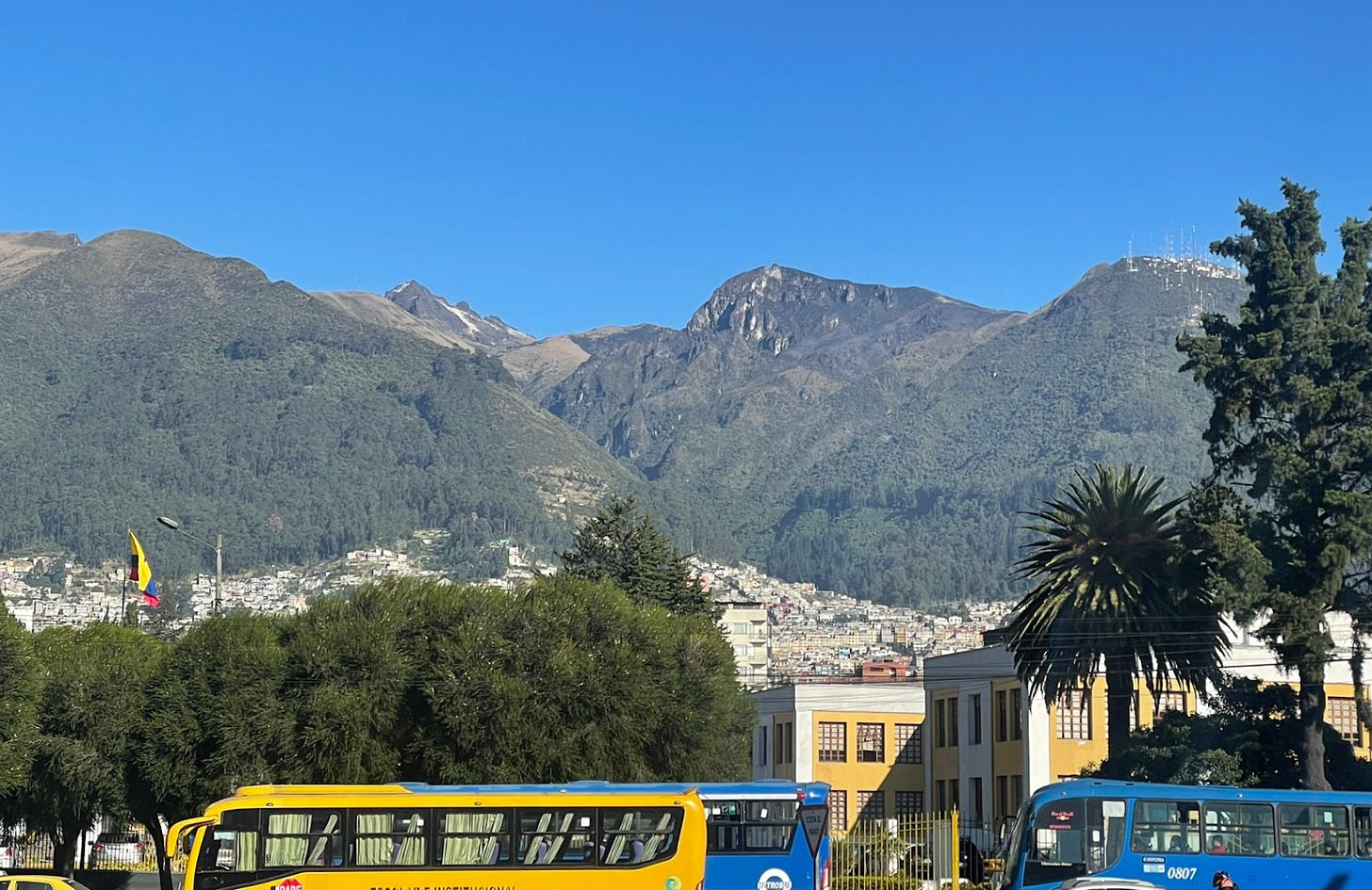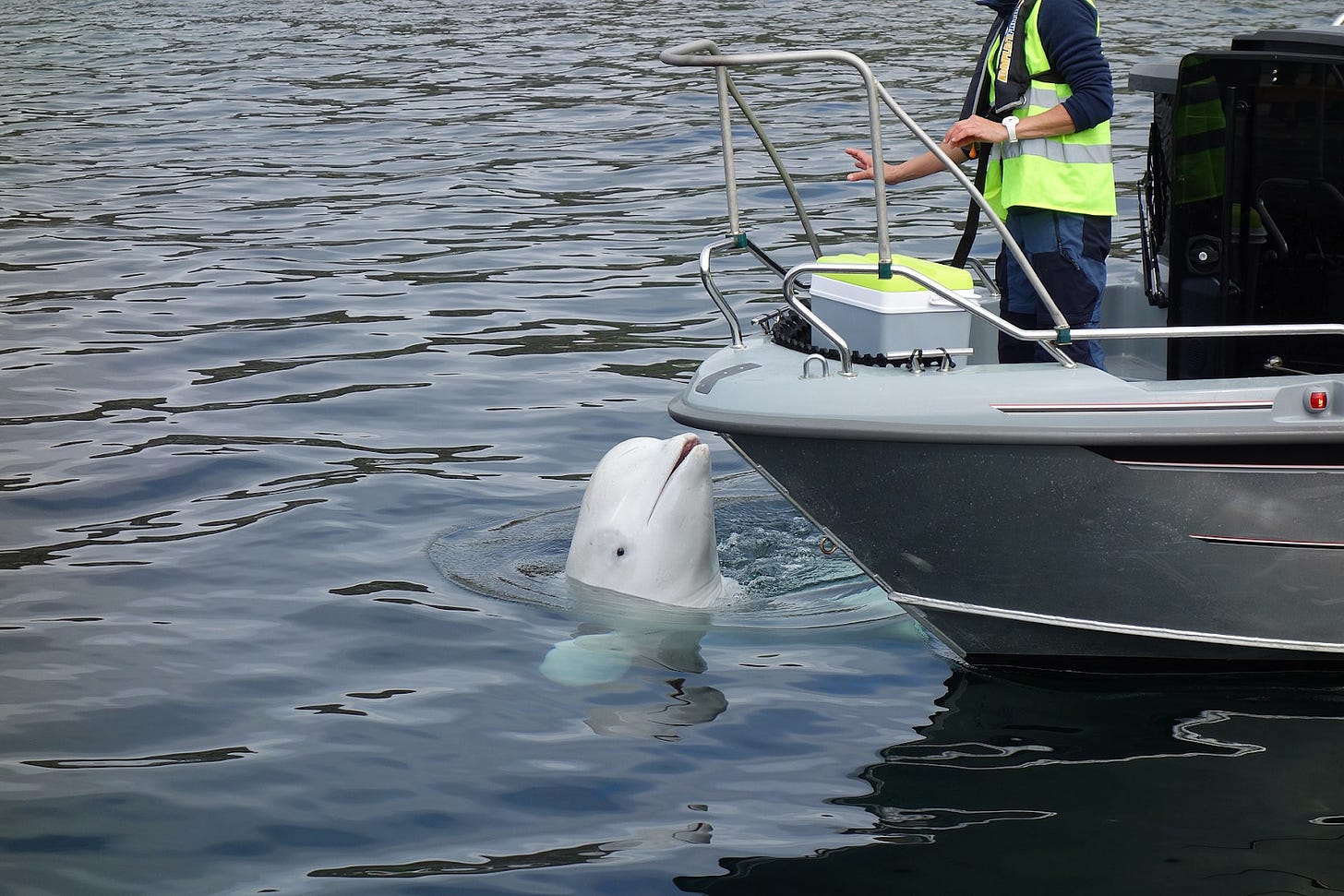Pillar subscribers can listen to this Pillar Post here: The Pillar TL;DR
Hey everybody,
Greetings from Quito, Ecuador, where I arrived last night to cover the International Eucharistic Congress, a week-long global pilgrimage event organized under the aegis of the creatively named Pontifical Committee for Eucharistic Congresses at the Vatican.
I got to Quito well after midnight, and I really haven’t seen or done anything yet, save for taking a Tylenol PM and hitting the hay.
But I will. Just as soon as I press send on this newsletter.
I came to see what the Church’s International Eucharistic Congress looks like, and to report back to you about how it lines up relative to the National Eucharistic Congress in Indianapolis this summer.
I’ve got a few interviews lined up while I’m here — and a few I’m trying hard to get — but I came mostly with very little schedule, because I like to kind of bop around at events like this, and talk with the people who God puts in my path. “Reporting by Providence” is how I like to think of it, even while Ed twists his hands at my penchant for stumbling equally into stories and into trouble in scenarios like this.
But look for dispatches from me over the next couple of days — and, subscribers, thanks for making it possible for The Pillar to cover global Catholic events like this. As it happens, I brought my dad with me on this trip — he plans to take pictures for Pillar, and otherwise figure out what kind of local trouble he can find.
We learned from the airport last night that the local mountain roads are steep, pitched, narrow, and navigated with aplomb by taxi drivers throttling little manual transmission cars up and down Andean slopes. Between airport and hotel, I felt like a passenger in a rally car race — so, thus far, this is a top reporting experience.
Quito, if you don’t know much about it, is a very cool city — at 9,350 feet above sea level, it is the second-highest city in the world with a population of more than a million — and it is also the capital city closest to the Equator, just 20 some miles away.
But while Quito is equatorial, it’s not hot, sitting as it does in a cool, dry, mountain valley, surrounded by active volcano peaks. And I’ll have more to report than just the weather soon, I promise.
The news
But the cardinal’s Saturday statement is considered by many in the Chaldean Catholic Church as a significant step-down of escalating tensions — some observers had been expecting Sako to attempt suspending the five bishops, a move that he’s not authorized to take unilaterally.
The conflict stems from disagreements about how best to respond to Christian persecution in Iraq, but also from long-stemming disagreement on other issues. It came to a head when the five bishops skipped a July deliberative synod of bishops held in Baghdad — and when Sako threatened them with penalties soon after.
Anyway, you can only read about it at The Pillar, and you should read about.
And her case may point to something interesting — a sentencing disparity between the sanctions clerics and laity face when they’re caught stealing from the Church.
Now, we’ve reported before about bishops intervening to spare their priests from prison time after they get caught stealing. But that’s not the only factor which goes into determining whether a lay or clerical parish thief will do time behind bars.
And the factors are interesting — as is the potential institutional effect of a sentencing gap between clergy and laity.
In Germany, the “synodal spirit” is still going strong — and the Vatican is still pushing back on related ideas.
So what’s the latest?
—
Maybe you know someone with sensory processing issues — someone for whom certain kinds of lighting can be overstimulating, or who can be overwhelmed by loud music or unexpected noises. Maybe you know someone who can only wear certain textures, or has difficulty looking people in the eye.
Maybe you know someone with autism, or another neurological difference, or a disability like Down syndrome, and you’ve never understood the sensory challenges which go along with that.
But for millions of families, those are daily crosses. And to someone with sensory processing challenges, going to Mass often feels completely overwhelming, with a typical parish Sunday Mass leaving a person exhausted, or overloaded, for hours.
So some parishes in the U.S. have decided to do something about that — to offer Mass with thought about how the liturgy and the environment impact people with neurodiversities.
And, to our presbyteral and episcopal readers — you could do this too.
If you think ecclesiastical politics don’t impact regular people — think again.
—
A likely cover
For the past five years, I’ve been amused — like a lot of people — to read about the antics of a whale named HValdimir, who appeared off the coast of Norway in 2019 wearing a camera harness around his girdle, marked with the words “Equipment St. Petersburg.”
The whale — a beluga — became something of a celebrity on the coast of Norway, where he was widely believed to be an escaped or defector Russian spy whale — hence the name “HValdimir,” best translated as “Valdimir the Whale.”
Valdimir turned out to be comfortable around people. He let fishermen swim with him to remove the harness he was wearing. He started hanging around the harbor in their town. He begged for food, especially at fish farms. He liked to be scratched near the blowhole. When a lady dropped her phone in the water, he retrieved it. Once, he “borrowed” a GoPro from a kayaker, swam around with it, and then returned it.
He became a friend. Or so the people of Hammerfest believed.
But consider the risk in this situation. A likely spy surfaced among them — Russia is well-known, as is the USofA, to use cetaceans and pinnipeds for military work. The Norwegian people befriended the probable spook. They allowed him access to their electronics. They let him follow their boats. They let him map their aquaculture industry in his big beluga brain.
When he turned up in Sweden last year, the people of Norway assured their neighbors of his good intentions.
If Hvaldimir was a spy, he was masterful. Reversing roles, he was literally eating from these people’s palms — and possibly stealing Norwegian state secrets along the way. You’ve really got to hand it to this beluga; hiding in plain sight has never before worked quite so well.
Raffi, of course, gets credit for laying a groundwork of trust here. But if HVald was stealing sensitive information, he was working for it.
Tragically, HValdimir the whale was found dead last week along a shipping route close to Stavanger, Norway. Animal rights groups say that HValdimir was shot to death, and that an autopsy will soon confirm their claim.
In the wake of the beluga’s death, some people have begun questioning whether HValdimir was really a Russian spy whale at all. While that’s possible, they say, he might have a different origin story.
At least one person claims that HValdimir was really an escaped whale named Semyon, who came from an aquarium in Murmansk, Russia, north of the Arctic Circle.
The story goes that Semyon escaped from a Kola Bay enclosure where once he had spent his days performing whale tricks for groups of disabled children brought to see him.
But I don’t believe it for a minute. I think that claim comes from the Russian propaganda machine.
I mean really, if they wanted to cover the tracks of the greatest spy whale in history, can you think of a better cover story than that?
—
Please be assured of our prayers, and please pray for us! We need it. And if you would, The Pillar has friends right now who have reached out while mourning loved ones, or who are hurting in (and by) the Church, or who are looking for stable employment. Let’s pray from them, too.
I’ll aim to remember them, and all of you, in front of Christ in the Eucharist, here in Quito.
Yours in Christ,
JD Flynn
Editor-in-chief
The Pillar







